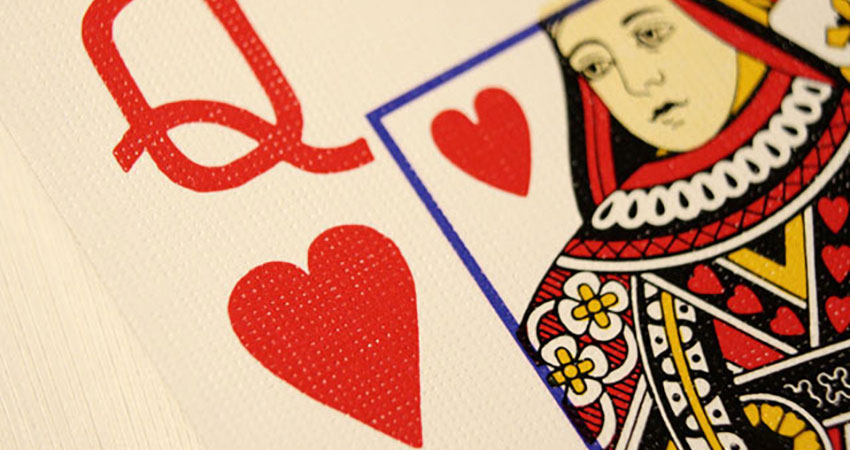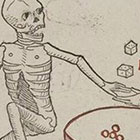
Making the most of momentum
Add a new dimension to combat with the Momentum Deck, a set of rules for using normal playing cards to spice up the battlefield.
What up pirates, ninjas, knights and other assorted archetypes!
How’s your gaming going? We’re on the verge of the fortieth anniversary of the first modern published role-playing game (Dungeons & Dragons, circa 1974, by the honorable Gary Gygax) and we’ve still got dragons to slay, don’t we?
This medium hasn’t lost its edge for a lot of reasons; the human love for stories, committed players such as ourselves, and an ever growing set of systems and backdrops for us to experiment in are only a couple of them. You might even go so far as to categorize its continued success as a matter of “dedicated inventiveness” on the part of designers and players alike. Martial artists have Qi, roleplayers have Di.
Well, today is my first opportunity to channel my Di into a blog and help add to the dynamics of our evolving gaming universe. I hope that my additions are strong enough to walk out of the ocean, make fire, take up the art of the spear, learn the secrets of the gun, harness the power of the atom, and… ‘kay I’ll actually just be happy if you find what I offer useful and it adds an extra level of entertainment to your sessions. So, you’re ready for your first gift from me, right? Here ya go.
Momentum Deck
If you’ve ever seen a Critical Hit Deck, then you’re not unused to the idea of applying different outcomes to your attacks based on drawn cards. The rule set I’m about to describe is at once an expansion and simplification of the Critical Hit Deck concept (these new rules surround us, penetrate us, and bind the game together). I think it’s able to be employed on a more frequent basis and, hopefully, adds an extra worthwhile element to your combat sequences. The build I am describing is compatible with Pathfinder and could be adapted for Dungeons & Dragons or (with a couple of minor changes) any other rpg you’re likely to play in which entails combat occurring at some point.
To employ this rule set, you’ll need a deck of standard cards.
I call this variant rule set “the Momentum Deck” and it’s designed with the premise that certain positions within combat automatically give way towards particular attacks. In real life you see that with techniques taught in martial arts training, so it seems reasonable to apply it into the gaming world as well.
When the game starts, the GM should shuffle a standard deck and place it somewhere that it can be easily accessed by themselves and the players. At the beginning of each combat turn before an action has been committed to, have players (and possibly enemies, if you’d like) draw a card from the top of the deck. Depending on the card drawn, attacks of a particular type (dictated by suit) will gain a bonus (dictated by the card’s face) to the first attack in that creature’s turn. Players draw prior to dictating their choice in attack so as to imbue the cards with a more tactical essence (for instance, a player may choose to eschew the typical effects of Weapon Finesse should a Strength-based attack prove more deleterious to their foe). Refer to the tables below to determine the attack type and bonus accorded by the cards:

After all four Aces are drawn or the combat sequence ends (whichever comes first), reshuffle any drawn cards back into the deck. The Momentum Deck is intended to be used in conjunction with the Pathfinder variant rules for Called Shots found in the “Ultimate Combat” manual, so feel free to let your players choose to take that -5 penalty to their attack as they slash at the orc’s head knowing that they already get a +5 to their roll because they drew a King of Hearts or a King of Diamonds (depending on they’re character build and the weapon they wield). If someone draws an Ace, go ahead, allow them to pick a location to have hit – it’s good combat roleplay and, frankly, elating for the players.
There are a few additional circumstantial rules to keep in mind with this rule set:
- Only the attacker draws a card at the beginning of their turn, never the defender
- When a Spade is drawn, Combat Maneuvers gain the appropriate bonus to their attack roll per the card’s face, but only apply the bonus to damage in the event the Combat Maneuver does damage (ie. the bonus damage does not translate into a bonus to the Combat Maneuver’s outcome if the outcome is not already damage-based)
- Aces are the only cards that do not get modified by a suit – whatever combat action is being taken is treated as threatening a critical
- If an Ace is drawn against a creature not subject to critical hits, then instead the player automatically hits without an attack roll and gains a +6 bonus to their damage roll
As a last suggestion, if you aren’t comfortable using the Momentum Deck for your players, consider it as an option for your major boss fights as it could potentially increase the difficulty of defeating the big bad without having to result to major fudging!
A final word: Mapping with momentum
Many gamers have the imagination necessary to visualize their combat experiences without need for a map, but there are times in combat where having one handy is helpful (for determining line of sight, flanking, or distance for a charge as some examples).
An alternative manner in which you may find the Momentum Deck useful is as a way to map out battlefields for combat sequences. This works for games operating on a square grid system, allowing miniatures to occupy particular spaces and eliminating the need for an actual large map. Each card represents a single square tile and while occupying that square the PC would gain the benefit appropriate to it per the “Attack Type Affected” and “Bonus” tables. This leads to a whole new level of strategy in your tabletop games, offering players a larger array of movement-related advantages they otherwise would not be capable of pursuing!
I hope you’ve enjoyed your first gift (the first of many) and that you find a use for it when you game in the future! In the event you aren’t playing Pathfinder, feel free to generalize in your interpretation of the attack types as well as their bonuses. You have my permission to flex your own creative muscles and to edit this rules variant any way that works to fit with your games.
Peace out pirates, ninjas, knights and other assorted archetypes! I wish you a plethora of twenties!



